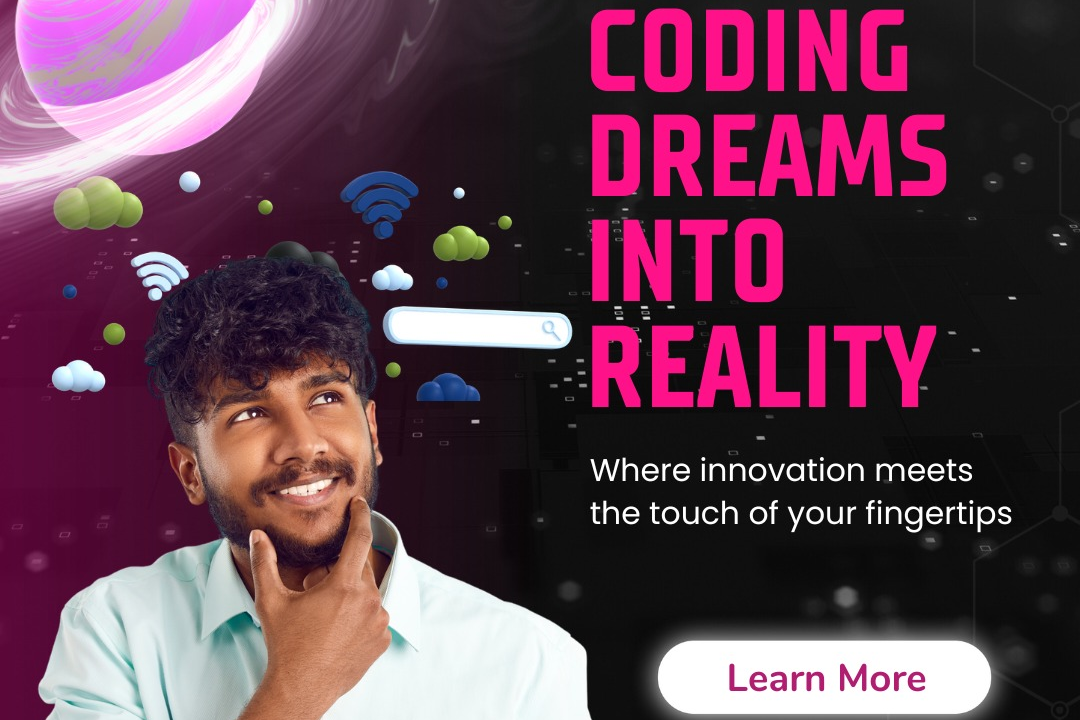Bloc Vs Provider
Bloc and Provider are state management solutions used in Flutter development to handle the app's sta
Bloc Vs Provider
Bloc and Provider are essential state management solutions in Flutter that cater to different development needs. Bloc promotes a clear separation of business logic from the user interface, making it ideal for larger applications that require robust, scalable architecture. It allows developers to manage complex states efficiently through streams and events. On the other hand, Provider is designed for simplicity and ease of use, making it a great choice for smaller projects or for developers who are new to Flutter. By offering a straightforward way to pass data through the widget tree, Provider facilitates a reactive programming model that can handle state changes with minimal boilerplate code. Choosing between Bloc and Provider ultimately depends on the project's complexity, scalability needs, and the developer's familiarity with state management concepts.
To Download Our Brochure: Download
Message us for more information: Click Here
Bloc and Provider are essential state management solutions in Flutter that cater to different development needs. Bloc promotes a clear separation of business logic from the user interface, making it ideal for larger applications that require robust, scalable architecture. It allows developers to manage complex states efficiently through streams and events. On the other hand, Provider is designed for simplicity and ease of use, making it a great choice for smaller projects or for developers who are new to Flutter. By offering a straightforward way to pass data through the widget tree, Provider facilitates a reactive programming model that can handle state changes with minimal boilerplate code. Choosing between Bloc and Provider ultimately depends on the project's complexity, scalability needs, and the developer's familiarity with state management concepts.
Course Overview
The “Bloc vs Provider” course provides an in-depth exploration of two prominent state management solutions in Flutter, designed for developers looking to enhance their skills in building responsive applications. Through a combination of theoretical concepts and hands-on projects, participants will learn the principles of the Bloc pattern, focusing on its event-driven architecture, and contrast it with the simplicity and ease of use offered by Provider. The course covers setup, best practices, and real-world examples, ensuring that learners can effectively implement and choose the appropriate state management solution based on their project's requirements. By the end of the course, attendees will have the expertise to utilize both Bloc and Provider in Flutter applications, enabling them to craft scalable and maintainable code.
Course Description
The “Bloc vs Provider” course offers a comprehensive comparison of two essential state management solutions in Flutter, equipping developers with the knowledge to choose the right approach for their applications. Participants will explore the event-driven architecture of the Bloc pattern, understanding how to handle complex state changes efficiently, while also delving into the simplicity and reactive capabilities of Provider. Through engaging real-time projects, learners will gain practical experience in implementing both techniques, assess their respective advantages and drawbacks, and develop the skills necessary to create responsive, maintainable Flutter applications tailored to different project needs. By the end of the course, participants will confidently apply both state management strategies to enhance their development workflow.
Key Features
1 - Comprehensive Tool Coverage: Provides hands-on training with a range of industry-standard testing tools, including Selenium, JIRA, LoadRunner, and TestRail.
2) Practical Exercises: Features real-world exercises and case studies to apply tools in various testing scenarios.
3) Interactive Learning: Includes interactive sessions with industry experts for personalized feedback and guidance.
4) Detailed Tutorials: Offers extensive tutorials and documentation on tool functionalities and best practices.
5) Advanced Techniques: Covers both fundamental and advanced techniques for using testing tools effectively.
6) Data Visualization: Integrates tools for visualizing test metrics and results, enhancing data interpretation and decision-making.
7) Tool Integration: Teaches how to integrate testing tools into the software development lifecycle for streamlined workflows.
8) Project-Based Learning: Focuses on project-based learning to build practical skills and create a portfolio of completed tasks.
9) Career Support: Provides resources and support for applying learned skills to real-world job scenarios, including resume building and interview preparation.
10) Up-to-Date Content: Ensures that course materials reflect the latest industry standards and tool updates.
Benefits of taking our course
Functional Tools
1 - Bloc (Business Logic Component)
Bloc is a powerful state management library for Flutter that promotes a reactive programming model. It helps separate business logic from the UI, making applications easier to test and maintain. Bloc employs streams to handle data and state changes, allowing developers to manage complex app states effectively. Participants in the training program will learn to implement events and states in Bloc, enabling them to create responsive and scalable applications. Real time examples will illustrate how to use Blo effectively along with unit testing practices, ensuring that students understand its architectural principles.
2) Provider
Provider is a simpler state management solution that integrates seamlessly with Flutter. It utilizes the InheritedWidget feature of Flutter to provide data to widget trees. This approach reduces boilerplate code and enhances performance. In the training program, students will understand how to use Provider to manage state efficiently in their applications, focusing on concepts such as ChangeNotifier, MultiProvider, and context based data access. The goal is to empower learners to create responsive UIs quickly, utilizing Provider's straightforward API and its reactive capabilities.
3) Dart's Asynchronous Programming
Both Bloc and Provider benefit from Dart's built in support for async programming. The training program will cover the use of Future, Stream, and async/await keywords, enabling students to handle asynchronous data flows effectively. They'll learn how to integrate asynchronous operations into both state management solutions, ensuring smoother user experiences. This fundamental understanding will prepare students to tackle real world scenarios where data is frequently fetched from APIs or databases, keeping the UI responsive and up to date.
4) Flutter's Inherited Widgets
A core concept of Flutter’s architecture is its use of InheritedWidgets, a key component in both Bloc and Provider implementations. The training will emphasize how these widgets facilitate efficient state management by allowing data to be passed down the widget tree. This understanding is crucial for grasping how Provider operates and how Bloc can further separate concerns while still leveraging Flutter's architecture. Students will gain hands on experience in creating custom InheritedWidgets as an advanced technique for state management.
5) Testing Tools
Effective state management also requires robust testing practices. The training program will introduce students to various testing tools suitable for Bloc and Provider implementations, including the Flutter testing framework and Mockito for mocking dependencies. Participants will learn to write unit tests and widget tests to validate the functionality of Bloc and Provider based applications. Understanding testing principles ensures that students can maintain high code quality and build reliable apps that meet user expectations.
6) Debugging Tools
Debugging is an essential part of the development process, and the training will cover tools that facilitate effective debugging of Bloc and Provider implementations. Students will explore tools like Flutter DevTools, Dart Observatory, and built in debugging options within IDEs. These tools help track state changes, visualize widget rebuilds, and identify performance bottlenecks. Gaining proficiency in debugging will empower students to quickly resolve issues in their applications, leading to smoother, more efficient development cycles.
Overall, the training program offers comprehensive insights into both Bloc and Provider technologies, equipping learners with the skills needed to implement effective state management strategies in their Flutter applications.
7) Comparative Analysis of Bloc and Provider
Understanding the strengths and weaknesses of Bloc and Provider is crucial for making informed decisions in application development. The training program will provide a comparative analysis, highlighting scenarios where one might be preferred over the other. Through practical exercises, participants will assess factors such as complexity, scalability, performance, and ease of use. This evaluation will guide students in selecting the most suitable state management solution based on their project requirements.
8) Real World Project Implementation
To reinforce learning, the program includes a real world project where students can apply concepts of both Bloc and Provider. They will work on a complete Flutter application that integrates these state management techniques, allowing them to experience firsthand the process of architecture design, implementation, and debugging. This hands on approach enhances comprehension and provides a portfolio piece that showcases their abilities to potential employers.
9) Understanding Streams and Sinks
For Bloc implementation, a deep dive into Dart's streams and sinks is essential. The training will cover how to create and manage streams effectively, including broadcasting and single subscription streams. Participants will learn how to utilize these constructs to handle real time data, making their applications more responsive. This knowledge is particularly valuable for developing features like live updates and real time notifications within applications.
10) Integration with External Libraries
Many Flutter applications require the use of external libraries for additional functionality. The training will explore how to integrate popular packages such as Dio for network requests and CachedNetworkImage for efficient image loading alongside Bloc and Provider. Understanding how to incorporate and coordinate with these libraries will help students enrich their applications and provide a better user experience.
11 - State Persistence
State persistence is an important aspect for many applications. The training will teach students how to implement state persistence techniques using shared preferences or local databases, ensuring that user data is saved even when the app is closed. Participants will learn to combine state management solutions with persistence layers effectively, leading to a seamless user experience.
12) Performance Optimization Techniques
Building performant applications is essential in modern development. The training will cover strategies for optimizing both Bloc and Provider implementations, such as selective rebuilding of widgets, using the `const` constructor, and memoization techniques. These tips will help students improve application performance and handle larger datasets more efficiently.
13) Architectural Patterns Overview
In addition to learning specific state management solutions, students will gain insight into broader architectural patterns such as MVVM (Model View ViewModel) and MVC (Model View Controller). This knowledge will enable learners to view their building strategies from a more holistic perspective and adapt their coding practices to fit various application requirements.
14) Reactive Programming Concepts
The training program will also introduce students to the principles of reactive programming, a foundational idea behind both Bloc and Provider. Understanding concepts such as observables, observers, and reactive streams will empower learners to create applications that respond dynamically to data changes, offering a more engaging and intuitive user experience.
15) Community and Resources
Finally, students will be guided on how to stay engaged with the Flutter community and utilize available resources for continuous learning. They will learn about official documentation, community forums, GitHub repositories, and how to contribute to open source projects. This emphasis on community involvement will foster ongoing growth and collaboration even after completing the training.
By incorporating these additional points, the training program will offer a rich and comprehensive education on state management in Flutter, preparing participants to tackle real world challenges confidently.
Browse our course links : Click Here
To Join our FREE DEMO Session: Click Here
This information is sourced from JustAcademy
Contact Info:
Roshan Chaturvedi
Message us on Whatsapp: Click Here
Email id: Click Here
Flutter Technical Interview Questions










